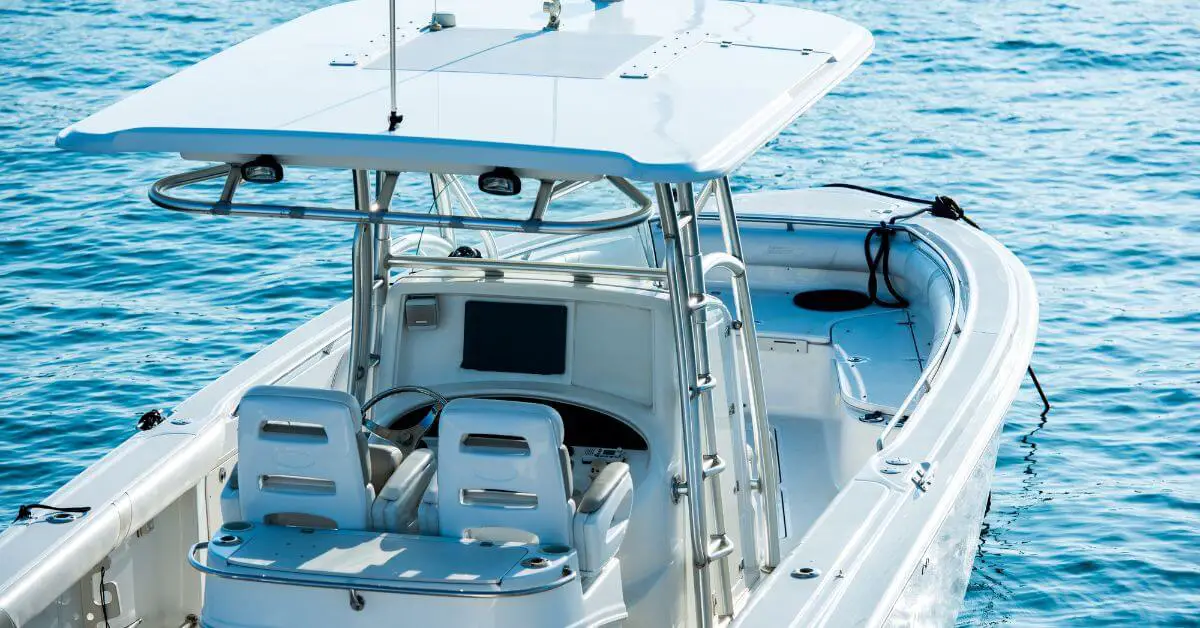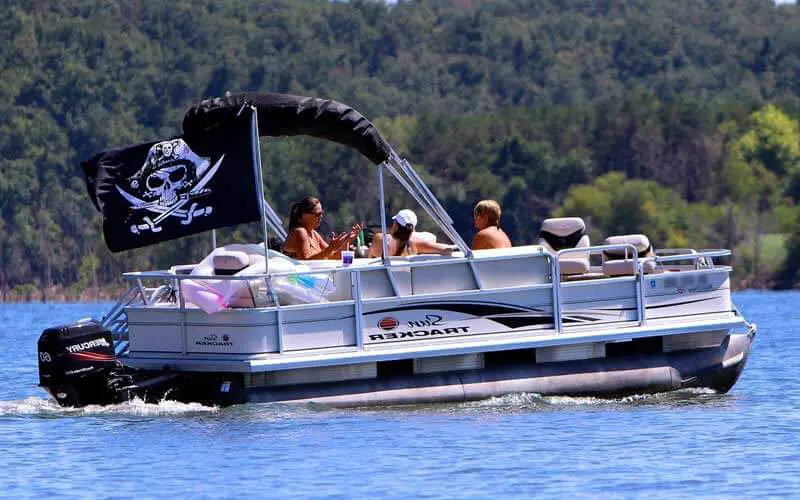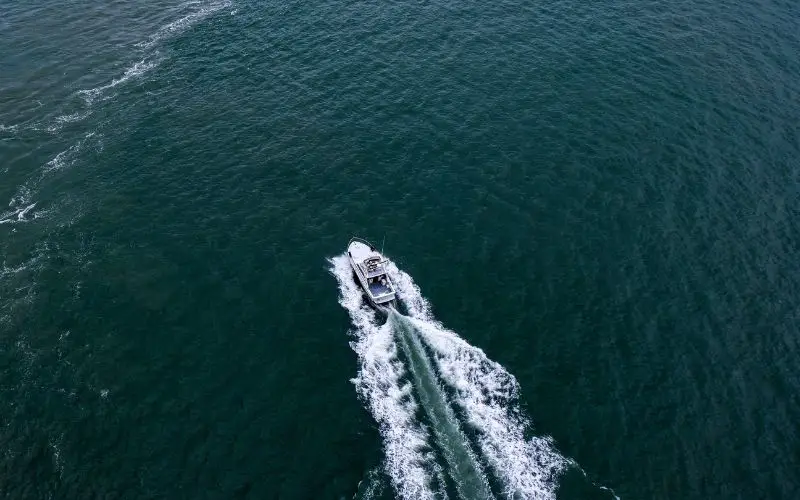Boating can be exhilarating and enjoyable, but getting started may seem overwhelming to beginners. One crucial aspect of boat ownership is knowing how to start your boat’s engine safely and efficiently. This blog article will provide you with a comprehensive step-by-step guide on starting a boat.
General Guidelines to Start Your Boat
Step 1: Pre-Departure Checks
Before starting your boat’s engine, it is essential to perform some pre-departure checks to ensure everything is functioning correctly:
1. Inspect the Hull: Check the hull for any signs of damage, such as cracks or holes. Ensure that any necessary repairs are conducted before starting the boat.
2. Check Fuel Levels: Make sure you have enough fuel in the tank for your intended trip. Running out of fuel in the middle of the water can be inconvenient and dangerous.
3. Inspect the Battery: Check the battery terminals for corrosion and ensure it is securely fastened. A weak or dead battery can prevent your boat from starting.
4. Verify Safety Equipment: Ensure you have all the necessary safety equipment on board, such as life jackets, fire extinguishers, first aid kits, and distress signals.
Step 2: Preparing the Engine
Once you have completed the pre-departure checks, it’s time to prepare the boat’s engine:
1.Inspect the Engine Compartment: Open the engine compartment and visually inspect the engine for any signs of damage or leaks. Address any issues before starting the engine.
2. Check Fluid Levels: Confirm the engine has sufficient oil and coolant levels. Consult your boat’s manual to determine the correct fluid levels and add more if necessary.
3. Connect Fuel Line: Ensure the fuel line is properly connected to the fuel tank and the engine. Check for any leaks or blockages in the line.
4. Open the Throttle: Move the throttle control to the neutral position. This prevents the engine from revving unexpectedly when started.
Step 3: Starting the Engine
Now that the engine is prepared, it’s time to start it up:
1.Turn on the Ignition: Insert the boat key into the ignition switch and turn it to the “on” position. Listen for a beep or other indication that the electrical systems are functioning correctly.
2. Engage the Choke: If your boat’s engine is equipped with a choke, engage it by pulling it fully out. This helps provide extra fuel to the engine during startup.
3. Prime the Engine: If your boat has a fuel primer bulb, squeeze it several times until firm. This helps to bring fuel into the engine and assist with starting.
4. Turn the Key: Turn the key to the “start” position while applying slight throttle to the engine. Keep the throttle in the neutral position, as the manufacturer indicates, until the engine starts.
Step 4: Monitoring the Engine
Once the engine is started, your work is not done. Be sure to monitor the engine and perform the following checks:
1. Check for Proper Idling: Ensure that the engine is running at a smooth idle speed without any unusual vibrations or noises.
2. Verify Water Flow: Look for water flowing out of the exhaust or the telltale hole. This indicates that the engine’s cooling system is working correctly.
3. Check Engine Gauges: Monitor engine gauges, such as oil pressure and temperature, to ensure they are within the manufacturer’s recommended range.
4. Listen for Unusual Noises: Pay attention to any strange noises from the engine. Unusual sounds may indicate mechanical problems.
How to Start a Pontoon Boat
To start a pontoon boat, you must follow a few simple steps. Here is a step-by-step guide:
1. Check Your Gauges: Before starting the pontoon boat, ensure that your battery has sufficient power and is suitable for use. Verify the fuel and oil levels to ensure they are adequate for your trip.
2. Attach the Safety Lanyard: Be sure to attach the safety lanyard to the ignition kill switch. This critical safety measure will shut off the engine if you fall overboard.
3. Turn on the Ignition: Insert the key into the ignition and turn it until you hear a beep or click. This indicates that the boat’s electrical systems are engaged and ready to start the engine.
4. Warm up the Engine: Give the engine a few moments before putting the pontoon boat into gear. The time required for warming up may vary depending on the engine, so consult your engine’s manual for specific instructions.
5. Shift into Gear: Once the engine has warmed up, shift the gear forward or reverse, depending on your intended direction. Start with gentle throttle movements to gradually accelerate the boat.
6. Monitor the Engine: As you start moving, watch the engine gauges closely. Pay attention to oil pressure, engine temperature, and RPM levels. This will help you ensure the engine runs smoothly and within safe operating parameters.
Note: You need to move slowly until you are in open water. Many lakes, rivers, and bays have posted speed limit signs or channel markers that must be followed. If you are new to the waterway, knowing any rules or regulations is essential before you travel.
How to Start an Inboard Motor
To start an inboard motor, follow these general steps:
1. Pre-Start Checks: Before starting the engine, perform a few checks. Ensure the engine compartment is well-ventilated and free of any hazards. Check the fuel level, oil level, and cooling water intake to ensure they are at appropriate levels. Verify that the batteries are charged and securely connected.
2. Bilge Blower: Inboard motors often have a bilge blower to remove potentially explosive fuel vapor. Switch on the bilge blower and let it run for a few minutes to clear any fumes from the engine compartment.
3. Ignition Key: Insert the key into the ignition switch and turn it to the “on” position. This will activate the boat’s electrical system, allowing power to reach the engine.
4. Throttle and Shift Controls: Make sure the throttle control is in the neutral position, and the shift control is in neutral or forward gear, depending on your boat’s current position.
5. Choke or Primer: If your inboard motor is equipped with a choke or primer, follow the manufacturer’s instructions for priming the engine. This step may vary depending on the specific model and fuel system.
6. Engine Start: Once you have completed the pre-start checks and priming (if applicable), turn the ignition key further to the “start” position. The engine will crank and hopefully start. Release the key once the engine is running.
7. Monitor Gauges: After starting the engine, watch the gauges. Look for normal oil pressure, temperature, and RPM readings. Consult your boat’s manual or seek professional assistance if any unusual readings occur.
Note: Always refer to your boat’s specific owner’s manual and follow the manufacturer’s instructions for starting your inboard motor. The above steps provide a general guideline, but knowing the specific requirements and safety measures for your particular model is essential.
How to Start an Outboard Motor Engine
To start an outboard motor, follow these general steps:
1. Open the Ventilation Cap: Twist open the ventilation cap on the fuel tank to allow air into the tank as the fuel drains. This prevents a vacuum from forming inside the tank while the motor is running, which could damage the tank or motor.
2. Check Tilt and Throttle: Make sure the engine is tilted fully down, which helps gas reach the carburetors more easily. Squeeze the primer bulb until it feels firm. Advance the throttle to about 2/3 of its maximum position.
3. Activate the Choke: Turn the key to the “on” position and push the choke lever in if it is a manual choke or pull it out if it is a pull-out choke.
4. Start the Engine: With the choke activated, turn the key to the “start” position to crank the engine. Simultaneously, you may need to push the key in to apply the choke or pull the starter cord, depending on the type of outboard motor.
5. Release the Choke and Adjust the Throttle: Once the engine starts, release the choke lever or push it in. Return the throttle to the neutral position after the ignition.
Note: Remember to follow the specific instructions provided by your outboard motor’s manufacturer, as these steps may vary depending on the make and model of your motor.
How to Start a Boat out of Water
A boat motor out of water can be started using motor flusher muffs and a hose, Here are the general steps you can follow:
1. Read the manual: Many boat motors require built-in attachments for garden hose fittings or motor muffs. This can be found in your boat’s manual.
2. Attach motor flusher muffs and hose: If your boat has motor flusher attachments, connect the hose to them. Otherwise, place motor flusher muffs over the intakes and connect the hose to the muffs.
3. Turn on the hose: Turn on the hose while your motor is switched off. This ensures that the water pump is engaged and that cooling water will be available. Most motors require water pressure of a minimum of 20 PSI.
4. Start the motor: Start your boat’s motor and allow it to run on idle for a few minutes.
5. Monitor temperature: Monitor the temperature gauge on your boat’s dashboard. Ensuring the temperature remains steady is integral to boat maintenance, even when the engine isn’t submerged.
Note: An impeller can be damaged in seconds if run without exposure to a water source. But that’s not all; if a marine motor runs in a dry state, it is susceptible to overheating, which can have a catastrophic end for your engine.
Conclusion
Starting a boat’s engine may seem daunting initially, but with proper knowledge and preparation, it can become a simple routine. By following the steps outlined in this guide, you can ensure a safe and smooth start to your boating adventure. Always consult your boat’s manual for specific instructions and seek professional assistance if you encounter any difficulties.









